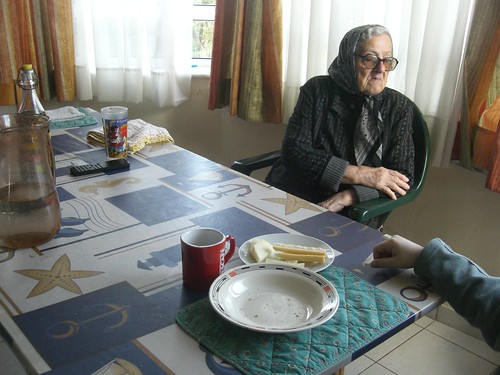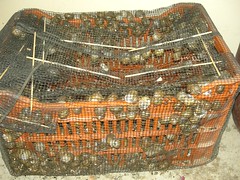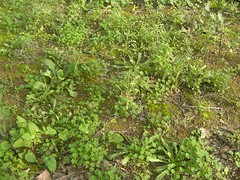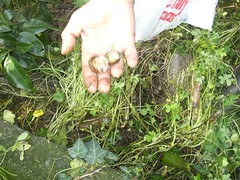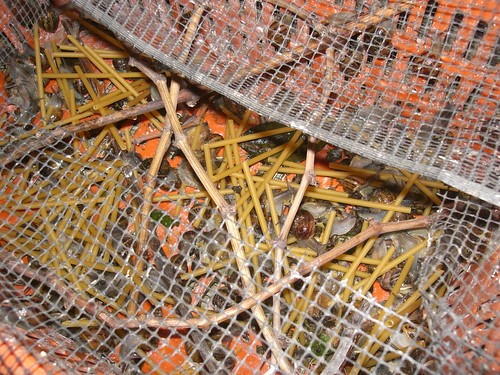Flash fiction: 500 words (or thereabouts)
The doorbell was ringing. It was almost four, siesta hour. Nothing moved at this hour, except children on bikes in the empty πλατεία. The only καφενείο and μπακάλι in the village were both closed; they hadn't opened their doors for two years now.
Evanthia had picked up the village routine very soon after moving to the island, on her husband's insistence, since they weren't making ends meet in the city. The daughter of a Greek Australian businessman, she had come to Greece at the age of twenty on her first unaccompanied holiday to the mother country. She met an electrician, giving up her university degree half-way through to get married. The children came soon after. Most Christmases were spent in Australia, while Easter was always at her husband's village – and her own parents’birth. After twenty years of living the life of a cosmopolitan middle-class housewife in a coastal Athenian suburb in an apartment bought by her parents, she suddenly found herself in an old εξοχικό, surrounded by grazing fields, olive groves and hilly countryside.
Before their move, they sent the children to their grandparents in Australia. The twins were due to start university; they may as well study where they would probably end up living. Evanthia’s family were surprised that she wouldn't go with them. Her family pleaded with her: “You’ll have a better life here" where Vaggelis could work in the family business (window cleaning high-rise buildings).
Her siblings could not understand what was holding her back. Evanthia wasn’t happy leaving an urban area with all its creature comforts. But she loved her husband too much to give him up, something she couldn't easily discuss with her divorced brother or unmarried sister. No matter how close they were as a family, Evanthia felt the taboo of discussing her paersonal happiness, lest she sounded condescending. To them, life was about moving up the employment ladder and into the property market, which their parents had already helped them to do anyway.
Vaggelis adamantly refused to hear anything of moving to the ξενιτειά. “I’m not leaving the country I was born and raised in at the age of 50 to die in a foreign country!” He’d been out of work for a year before making the decision to move away. “You don’t have to come with me,” he reminded her, “but don’t expect me to stay here when all around us people are leaving.”
What Evanthia found most difficult to cope with was the very basic way people approached life in the country. She knew nearly everyone, being related to most people, but they had very little in common. Their world as housewives was on a different tangent to her former life. Instead of the supermarket or the λαϊκή, they’d go to their fields for ingredients to cook with. Nothing was simply heated up in a microwave – everything required preparation from scratch.
“No wonder you’re bored,” her neighbour Keti told her. “Gather some snails and by the time you clean and cook them, the morning is over.”
Evanthia got off the sofa to open the door, where she found her neighbor holding a plate of some strange-looking dish.
“I bought you something!” Keti laughed sweetly, with a radiant smile on her face. “You know Vaggelis loves this, don’t you?” On seeing the snail shells, Evanthia was seized with revulsion, but managed to keep a straight face as she didn’t want to disturb the peace. Vaggelis was sleeping, after working in the olive grove grafting wild trees with domesticated species. She took the plate from Keti’s hand and was just about to thank her when something caught her eye. She looked intently at the plate.
“It’s freshly cooked, if that's what you're worried about,” Keti assured her, noticing her scrutinizing countenance.
“I know that,” Evanthia replied. “I just never expected to see χοχλιούς on Royal Albert.”
“Ρού-α τί?” Keti had always found Evanthia difficult to understand herself.
©All Rights Reserved/Organically cooked. No part of this blog may be reproduced and/or copied by any means without prior consent from Maria Verivaki.
The doorbell was ringing. It was almost four, siesta hour. Nothing moved at this hour, except children on bikes in the empty πλατεία. The only καφενείο and μπακάλι in the village were both closed; they hadn't opened their doors for two years now.
Evanthia had picked up the village routine very soon after moving to the island, on her husband's insistence, since they weren't making ends meet in the city. The daughter of a Greek Australian businessman, she had come to Greece at the age of twenty on her first unaccompanied holiday to the mother country. She met an electrician, giving up her university degree half-way through to get married. The children came soon after. Most Christmases were spent in Australia, while Easter was always at her husband's village – and her own parents’birth. After twenty years of living the life of a cosmopolitan middle-class housewife in a coastal Athenian suburb in an apartment bought by her parents, she suddenly found herself in an old εξοχικό, surrounded by grazing fields, olive groves and hilly countryside.
Before their move, they sent the children to their grandparents in Australia. The twins were due to start university; they may as well study where they would probably end up living. Evanthia’s family were surprised that she wouldn't go with them. Her family pleaded with her: “You’ll have a better life here" where Vaggelis could work in the family business (window cleaning high-rise buildings).
Her siblings could not understand what was holding her back. Evanthia wasn’t happy leaving an urban area with all its creature comforts. But she loved her husband too much to give him up, something she couldn't easily discuss with her divorced brother or unmarried sister. No matter how close they were as a family, Evanthia felt the taboo of discussing her paersonal happiness, lest she sounded condescending. To them, life was about moving up the employment ladder and into the property market, which their parents had already helped them to do anyway.
Vaggelis adamantly refused to hear anything of moving to the ξενιτειά. “I’m not leaving the country I was born and raised in at the age of 50 to die in a foreign country!” He’d been out of work for a year before making the decision to move away. “You don’t have to come with me,” he reminded her, “but don’t expect me to stay here when all around us people are leaving.”
What Evanthia found most difficult to cope with was the very basic way people approached life in the country. She knew nearly everyone, being related to most people, but they had very little in common. Their world as housewives was on a different tangent to her former life. Instead of the supermarket or the λαϊκή, they’d go to their fields for ingredients to cook with. Nothing was simply heated up in a microwave – everything required preparation from scratch.
“No wonder you’re bored,” her neighbour Keti told her. “Gather some snails and by the time you clean and cook them, the morning is over.”
Evanthia got off the sofa to open the door, where she found her neighbor holding a plate of some strange-looking dish.
“I bought you something!” Keti laughed sweetly, with a radiant smile on her face. “You know Vaggelis loves this, don’t you?” On seeing the snail shells, Evanthia was seized with revulsion, but managed to keep a straight face as she didn’t want to disturb the peace. Vaggelis was sleeping, after working in the olive grove grafting wild trees with domesticated species. She took the plate from Keti’s hand and was just about to thank her when something caught her eye. She looked intently at the plate.
 |
| Snails on Royal Albert:my mother's crockery sits in my china cabinet, neavily unused. |
“I know that,” Evanthia replied. “I just never expected to see χοχλιούς on Royal Albert.”
“Ρού-α τί?” Keti had always found Evanthia difficult to understand herself.
©All Rights Reserved/Organically cooked. No part of this blog may be reproduced and/or copied by any means without prior consent from Maria Verivaki.




